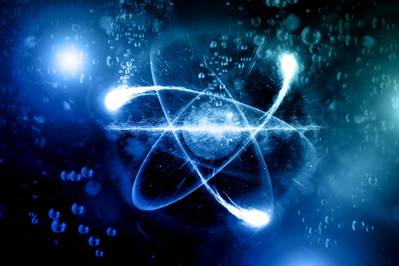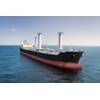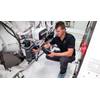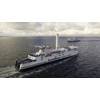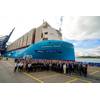Will the Effort to Reach Zero Emissions Go Nuclear?
On December 8, 1953 President Dwight D. Eisenhower addressed the 470th Plenary Meeting of the United Nations General Assembly. The speech he delivered is often recognized as his effort to introduce “Atoms for Peace”, a program to move nuclear fission and technology away from weapons development and into clean energy.
As a result of that effort and program, the NS Savannah was built and delivered as the first nuclear-powered merchant ship. She was built in the late 1950s at a cost of $46.9 million and launched on July 21, 1959. Despite rumors and industry scuttlebutt, the vessel actually traded and carried cargo and was deemed to have completed its mission as a technical success.
The Savannah has been moored in a Baltimore port since 2008. Last fall, its nuclear reactor was removed as part of its decommissioning. As we continue discussing the use of nuclear energy, keep in mind that the Savannah remains a recognized floating nuclear facility by the NRC. The decommissioning continues in capable hands with members of the U.S. Maritime Administration who have been associated with the vessel for many years.
The Savannah was not the only global merchant vessel that looked to employ nuclear propulsion. The Russian built LASH carrier Sevmorput continues to operate under government control to this day.
Move forward to current day requirements and regulations addressing alternative energy to power the national grid and the maritime industry’s efforts to reach zero emissions, there is an indication that advanced nuclear technologies may be the path to achieve both goals and meet President Eisenhower’s final statement in his Atoms for Peace speech:
“To hasten the day when fear of the atom will begin to disappear from the minds of the people and the governments of the East and West, there are certain steps that can be taken now”.
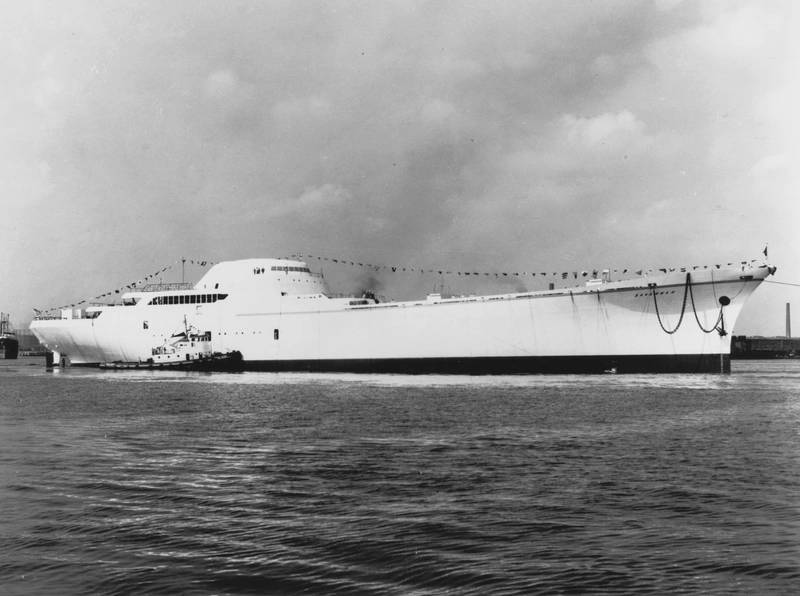 Launched on July 21, 1959, the 21,000-ton NS Savannah, propelled by a pressurized-water reactor, demonstrates the feasibility of commercial ships propelled by nuclear energy. (Photo: Oak Ridge National Laboratory)
Launched on July 21, 1959, the 21,000-ton NS Savannah, propelled by a pressurized-water reactor, demonstrates the feasibility of commercial ships propelled by nuclear energy. (Photo: Oak Ridge National Laboratory)
On September 28, 2023 we were invited to attend a Congressional Briefing on Advanced Nuclear Technology in the Maritime Industry in Washington DC. The meeting was well attended with congressional support, and the briefing was followed by an American Bureau of Shipping (ABS) Global Forum – The Role of Advanced Nuclear Technologies in the Maritime Energy Transition.
The ABS Forum gathered many maritime and energy sources to discuss the capability of new nuclear technologies. A well-orchestrated collection of shipowners, operators, port authorities, shipbuilders, designers, regulators and nuclear industry representatives were in attendance.
While many attendees may have been skeptical about where the forum discussions would lead, ABS Chairman and CEO Christopher J. Weirnicki’s opening remark, “This is a generational moment,” proved to be an understatement after listening to all of the panels. His quote could have well been included in Eisenhower’s original address to the UN.
A driving force behind the ability to continue the research beyond the opening forum is the development of Small Module Reactors (SMR).
SMRs are a class smaller than conventional nuclear reactors, which can be built in one factory location, shipped, commissioned and operated at a separate site. The term SMR refers to the size, capacity and modular construction. It does not define the reactor type and the fission process applied. SMR types range from scaled down versions of exiting reactor designs to the latest Generation IV designs.
SMRs typically report an electrical output of less than 300 megawatts (MW) and/or less than 1,000 MWs of thermal energy. Many SMR proposals recommend stacking units to achieve the required energy output for each application.
To address the SMR for grid energy, the systems are developing to quickly replace coal fired power plants, diesel powered plants and natural gas. The modular design allows the energy source to be upgraded while retaining the remaining working platform of the power plant. The simple modular designs have fewer moving parts reducing failures that lead to current reactor accidents. SMRs use less radioactive material, significantly removing the risk of a nuclear disaster on the scale of Fukushima.
SMRs can be the solution to the U.S. energy problems as we worked toward mobility electrification. Offshore wind is facing huge economic issues and other headwinds on its path forward. Solar is experiencing similar problems. Both have actual efficiency issues when compared to current fossil fuel energy distribution. SMR nuclear energy does not have that problem; and with that said, getting that message across is easier said than done.
The global SMR market was reportedly valued at US$9.7 billion in 2021 and is projected to grow at a compound annual growth rate of 3.2% to reach US$11.3 billion by 2026. There are over 19 companies developing designs worldwide, and Russia & China report SMR systems in operation. The technology, no different than the Savannah, can be a technical success. The energy investment can lead to reduced costs for maritime applications. The issue moving forward will be defining the economics and moving past the perception of risk with regard to historical nuclear power: security, uranium fuel development, transportation and final storage of spent fuel material being paramount.
The economics goes beyond ship construction and propulsion costs. Imagine an industry that employs a fuel source that is good for 15 to 25 years. No need for the costs of developing the infrastructure to bunker ammonia, hydrogen or the proposed list of alternative fuels offered to meet IMO emission goals.
Building a financial model to address not only the capital costs required for new ship design, the SMR modular application, insurance, crew training and welfare, and the ability for the market and vessel type to save lost time for bunkering and repairs is, in our opinion, the next step to determine if the concept is viable. The propulsion application can actually allow us to reach zero emissions and successful sustainability within the IMO 2050 goal, while most of the current alternatives are merely temporary solutions. And with that, our financial and technical network intends to work closely with industry sources to analyze the economics and move this concept forward.



